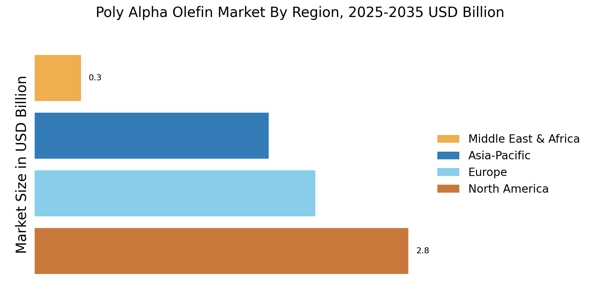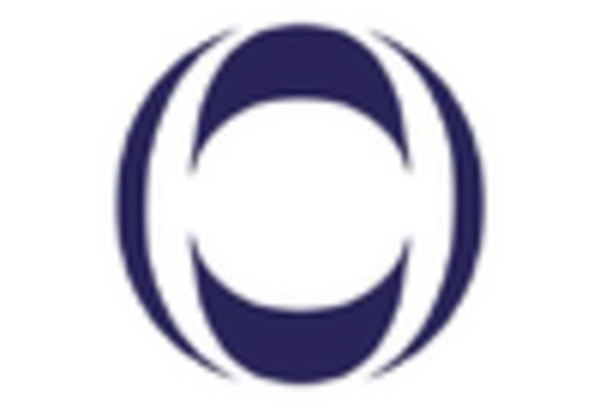Growth in Oil and Gas Applications
The oil and gas industry is witnessing a surge in the utilization of poly alpha olefins, primarily due to their excellent lubricating properties and high performance in extreme conditions. These synthetic hydrocarbons are increasingly employed in drilling fluids, hydraulic fluids, and other applications where high thermal stability and low pour points are essential. The Poly Alpha Olefin Market is likely to benefit from this trend, as the demand for efficient and reliable lubricants continues to escalate. Market analysis indicates that the oil and gas segment is expected to account for a substantial share of the overall poly alpha olefin consumption, with a projected growth rate of around 5% annually. This growth underscores the critical role of poly alpha olefins in enhancing operational efficiency and safety in the oil and gas sector.
Rising Demand in Automotive Sector
The automotive sector is experiencing a notable increase in demand for lightweight and fuel-efficient materials, which is likely to drive the Poly Alpha Olefin Market. Poly alpha olefins are utilized in various automotive applications, including engine oils and lubricants, due to their superior thermal stability and low volatility. As manufacturers strive to enhance vehicle performance and reduce emissions, the adoption of poly alpha olefins is expected to rise. Recent data indicates that the automotive lubricants segment is projected to grow at a compound annual growth rate of approximately 4.5% over the next five years. This trend suggests a robust market for poly alpha olefins, as they contribute to improved fuel efficiency and reduced environmental impact, thereby reinforcing their significance in the Poly Alpha Olefin Market.
Expansion in Personal Care Products
The personal care industry is increasingly incorporating poly alpha olefins into formulations for various products, including skin care, hair care, and cosmetics. These compounds are valued for their emollient properties, which enhance product texture and performance. The Poly Alpha Olefin Market is poised for growth as consumer preferences shift towards high-quality, performance-driven personal care products. Recent market data suggests that the personal care segment is anticipated to grow at a rate of approximately 6% over the next few years, driven by rising consumer awareness regarding product ingredients and efficacy. This trend indicates a promising opportunity for poly alpha olefins, as they align with the industry's focus on innovation and quality, thereby solidifying their position in the Poly Alpha Olefin Market.
Technological Innovations in Production
Technological advancements in the production of poly alpha olefins are likely to play a crucial role in shaping the Poly Alpha Olefin Market. Innovations such as improved catalytic processes and enhanced polymerization techniques are enabling manufacturers to produce high-quality poly alpha olefins more efficiently and cost-effectively. These advancements are expected to lead to a reduction in production costs and an increase in the availability of diverse grades of poly alpha olefins. Market analysis suggests that the introduction of new technologies could result in a growth rate of approximately 5.5% in the poly alpha olefin segment over the next few years. This technological evolution not only enhances the competitiveness of poly alpha olefins but also expands their application scope, thereby reinforcing their significance in the Poly Alpha Olefin Market.
Increasing Focus on Sustainable Solutions
Sustainability is becoming a pivotal concern across various industries, including the Poly Alpha Olefin Market. Manufacturers are increasingly seeking eco-friendly alternatives to traditional materials, and poly alpha olefins are emerging as a viable option due to their potential for recyclability and lower environmental impact. The shift towards sustainable practices is likely to drive innovation in the production of poly alpha olefins, with an emphasis on bio-based feedstocks. Market trends indicate that the demand for sustainable products is expected to grow significantly, with projections suggesting a compound annual growth rate of around 7% in the coming years. This focus on sustainability not only enhances the appeal of poly alpha olefins but also positions them favorably within the broader context of environmental responsibility in the Poly Alpha Olefin Market.


















Leave a Comment